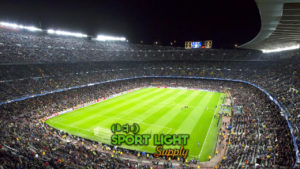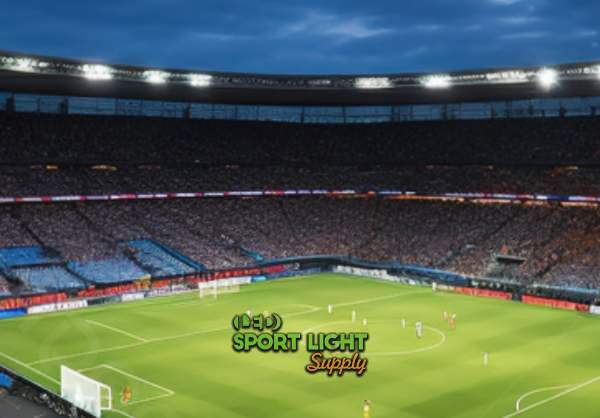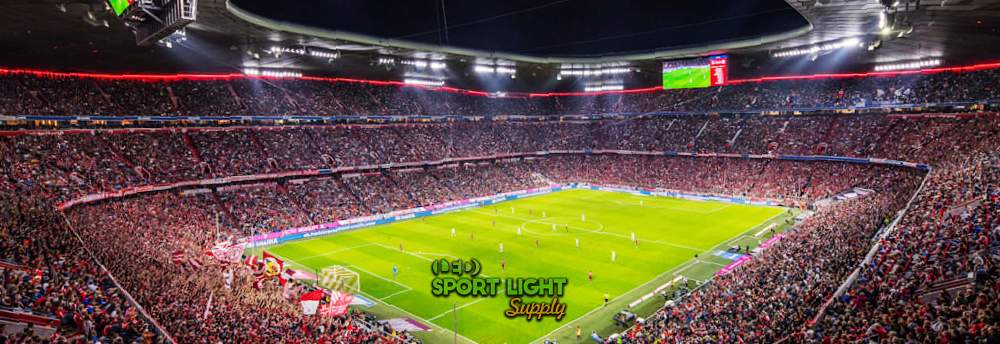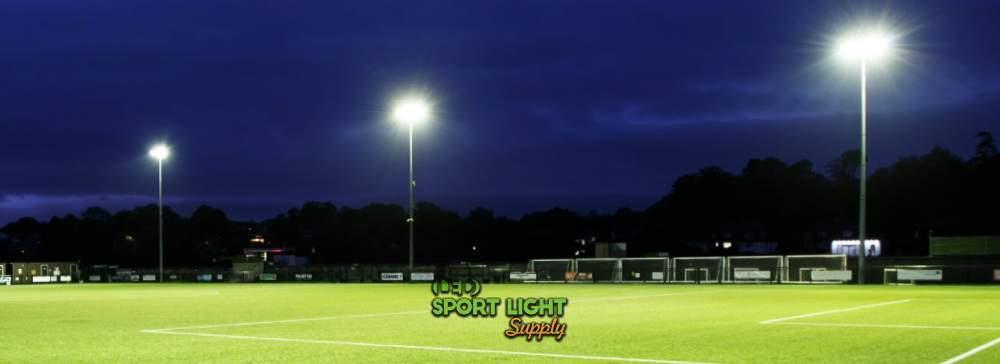
Soccer is a sport that demands precision, speed, and a high level of coordination between players. For this reason, lighting plays a key role in ensuring that matches are played effectively, safely, and fairly, whether during the day or night. The goal is to ensure uniform illumination across the entire playing surface, with special consideration given to factors like the color temperature and the durability of the lighting system. LED lights, in particular, have emerged as a leading choice due to their efficiency, longevity, and adaptability.
| Lighting Parameter | Lux Level | Color Temperature |
|---|---|---|
| Professional Soccer Field | 500 to 1000 lux | 5000K to 6000K (Daylight) |
| Amateur Soccer Field | 300 to 500 lux | 5000K to 6000K (Daylight) |
| Training or Recreational Field | 200 to 300 lux | 4000K to 5000K (Cool White) |
| Indoor Soccer Field | 300 to 600 lux | 4000K to 5000K (Neutral White) |
| Night Match (High-Performance) | 800 to 1000 lux | 5000K to 6000K (Daylight) |
Table of Contents
Toggle The main objective of soccer field lighting is to achieve adequate visibility for players, referees, and spectators. In professional matches, players must be able to see the ball clearly at all times, even when it is in motion at high speeds. As a result, the standard illuminance level for professional soccer fields typically falls between 500 and 1000 lux. This range ensures the field is bright enough to support the fast-paced nature of the game, allowing players to react swiftly to passes, shots, and other dynamic movements.
The main objective of soccer field lighting is to achieve adequate visibility for players, referees, and spectators. In professional matches, players must be able to see the ball clearly at all times, even when it is in motion at high speeds. As a result, the standard illuminance level for professional soccer fields typically falls between 500 and 1000 lux. This range ensures the field is bright enough to support the fast-paced nature of the game, allowing players to react swiftly to passes, shots, and other dynamic movements.
For amateur or recreational soccer fields, the illuminance level can be lower, ranging from 300 to 500 lux. This level is generally sufficient for non-competitive games where the intensity and speed of play are not as high as in professional matches. However, ensuring the proper balance of light is necessary in all settings to minimize mistakes due to poor visibility and ensure players can engage with the game without unnecessary strain on their eyes.
Uniformity in lighting is just as crucial as the overall illuminance levels. When lighting is uneven, shadows can form across the field, creating areas where players struggle to see the ball or even their teammates. This unevenness can affect player performance and can also lead to safety concerns, especially when players are at risk of tripping or colliding with one another.
The uniformity ratio is a key metric used to evaluate lighting on a soccer field. It is determined by dividing the average illuminance by the minimum illuminance. For optimal lighting, this ratio should ideally be at least 0.7. This ensures that the light is evenly distributed across the field, reducing the chances of shadowed or overly bright areas. LED lighting fixtures are particularly effective at providing uniform illumination due to their directional capabilities and minimal light dispersion. This makes them an excellent choice for preventing hotspots or dark areas, which can hinder gameplay.
The color temperature of soccer field lights plays a significant role in player visibility. Light temperature refers to the warmth or coolness of the light emitted by the fixture, measured in Kelvin (K). For soccer fields, the optimal color temperature typically ranges from 5000K to 6000K, which is close to the natural daylight spectrum. This color temperature enhances visibility by providing clear, crisp light that mimics daylight, making it easier for players to distinguish the ball, their teammates, and other field elements.
When lighting a soccer field, we may avoid lighting temperatures that are either too warm or too cool, as these can negatively affect contrast. A warmer light (e.g., 3000K) tends to make everything appear softer and may create difficulty for players in distinguishing between different colored objects. On the other hand, lights with a cooler temperature (above 6000K) can cause glare and discomfort, straining the eyes during night matches. Choosing a light that falls within the recommended range supports clearer visibility, allowing players to focus on the game without being distracted by lighting inconsistencies.

The Color Rendering Index (CRI) is a measurement used to determine how accurately a light source renders colors compared to natural light. A CRI value of 70 is considered acceptable for general lighting needs, but for professional soccer fields, a CRI of 80 or above is preferred. This higher CRI ensures that the colors on the field, such as the team uniforms, the ball, and even the players’ skin tones, are represented clearly and accurately under artificial light.
In a soccer game, where fast movements and accurate decisions are crucial, players benefit from being able to easily distinguish between different colored elements on the field. A higher CRI also reduces the risk of visual strain, which can be exacerbated by poorly rendered colors. By using LED lights with a high CRI, soccer fields can offer a more natural and accurate color experience for players, improving their ability to perform well on the field.
The design and placement of lighting fixtures on a soccer field are fundamental to achieving uniform illumination and preventing glare or shadows. Lights must be positioned in such a way that they provide consistent coverage across the entire field, from the goal lines to the corners. Typically, floodlights are mounted on tall poles surrounding the perimeter of the field. These poles are usually placed at a height of 12 to 20 meters, allowing the light to spread across the field evenly and reach all areas.
Proper placement of floodlights is crucial for ensuring that light is distributed as uniformly as possible. The fixtures should be angled to prevent any direct light from hitting the players’ eyes, as this would cause glare and hinder performance. Moreover, the distance between the poles and the number of poles used should be calculated carefully to avoid areas of the field that are underlit or overexposed.
LED lighting is particularly advantageous for soccer field illumination due to its compact size and directional light capabilities. Unlike traditional lamps, which emit light in all directions, LED fixtures can be designed to emit light in specific directions, minimizing the risk of light spill and glare. This precision allows lighting designers to place LEDs strategically and adjust their position and angles to achieve the best possible coverage.
Moreover, the flexibility of LED lighting systems allows for easy adjustments in the field’s lighting design. By incorporating adjustable optics, lighting designers can further fine-tune the distribution of light, ensuring uniformity and reducing the chances of shadows or uneven brightness. This flexibility enables facilities to accommodate different types of events, from recreational matches to high-level professional games.

One of the standout features of LED lighting is its superior energy efficiency compared to traditional lighting technologies, such as metal halide or high-pressure sodium lamps. LED lights consume significantly less power—up to 50% less—while providing the same or even better levels of illumination. This reduction in energy consumption translates directly to lower electricity bills, making LED lights an economically viable option for sports facilities.
Furthermore, LED lighting systems generate much less heat than conventional lights, which contributes to energy savings and a more comfortable playing environment. Lower energy consumption not only reduces operational costs but also minimizes the environmental impact of the lighting system, aligning with sustainability goals set by many sports organizations and local governments.
LEDs have a longer lifespan than traditional lighting systems. Where conventional bulbs might need replacement every few years, LEDs can last for up to 50,000 hours or more, depending on the specific model. This extended lifespan reduces the frequency of bulb replacements and, consequently, the maintenance costs and environmental waste associated with disposing of used lamps.
The longer operational life of LED lighting systems also means fewer disruptions to matches due to lighting failures. This consistency helps sports facilities maintain their reputation and ensures that events are not interrupted by the need for frequent repairs or replacements.
LED lights are designed to withstand the demands of outdoor environments, making them particularly suitable for soccer fields that are exposed to varying weather conditions. Unlike traditional lamps, which may be more susceptible to damage from elements like rain, wind, or extreme temperatures, LEDs are built with durable materials that resist harsh conditions. This resilience contributes to their longevity and ensures reliable performance over time.
Additionally, LED fixtures are less prone to breakage compared to other lighting technologies, such as fluorescent or incandescent bulbs, which can shatter more easily. This durability makes LEDs a safe choice for outdoor sports fields where lighting fixtures are often subject to rough handling, exposure to the elements, and potential impacts.
LED lights have minimal maintenance needs due to their durability and longer operational life. While they may require occasional cleaning to maintain optimal performance and light output, the frequency of maintenance is significantly reduced compared to traditional lighting systems. The lack of frequent bulb replacements, as required with other technologies, means that sports facilities can save on both time and labor costs associated with maintaining their lighting systems.
In addition to reducing the physical maintenance workload, LED lights are often equipped with smart features, such as automatic dimming and energy-saving modes, which help to further minimize upkeep and ensure that the lighting system remains efficient throughout its lifespan.
By focusing on appropriate illumination levels, uniformity, color temperature, and lighting design, soccer facilities can create an optimal playing environment. LED lights not only offer significant cost savings and reduce environmental impact, but they also provide an enhanced playing experience for athletes by improving visibility and reducing glare. With their extended lifespan and low maintenance requirements, LED lighting systems represent the future of soccer field lighting, offering both practical and sustainable solutions for the sports industry.
Drop us a line to receive a free lighting design